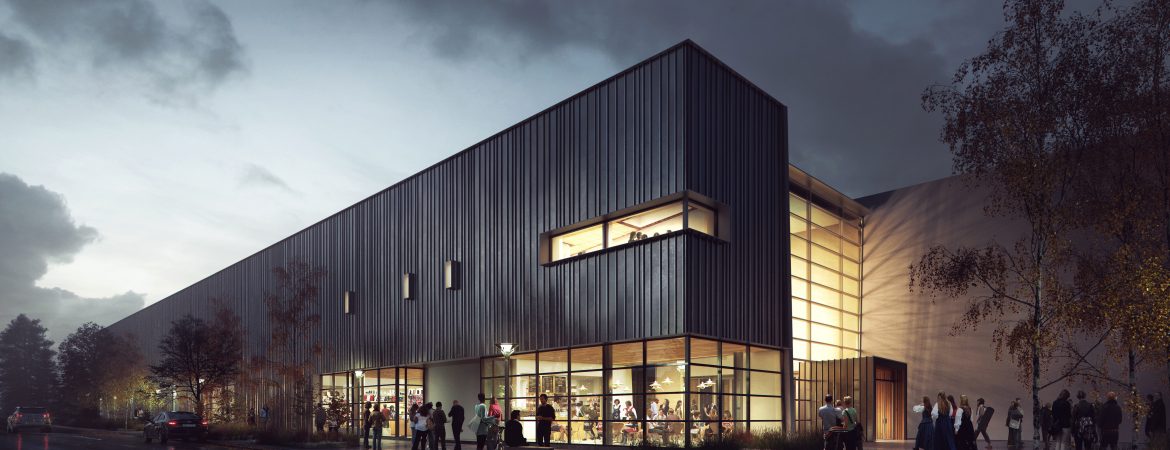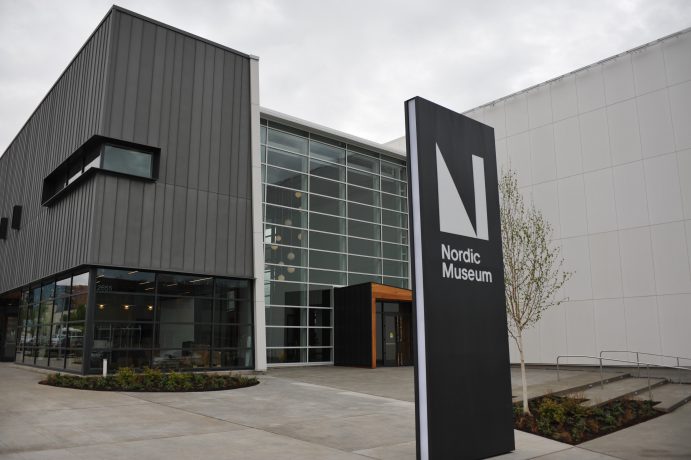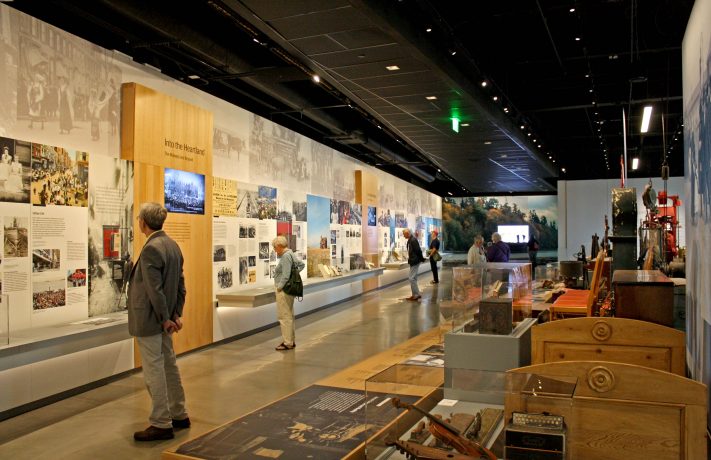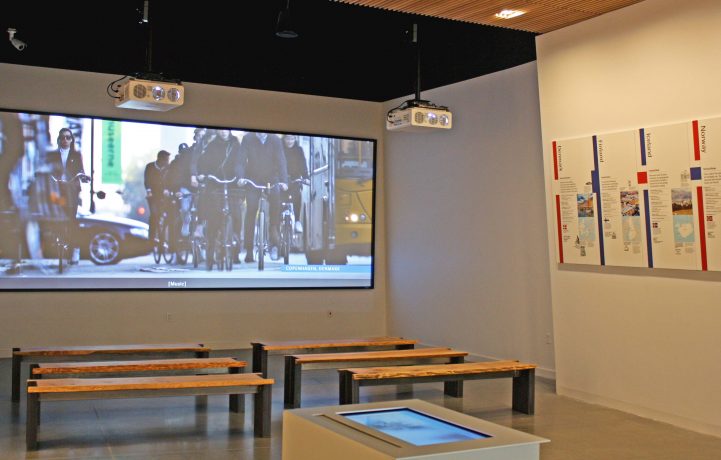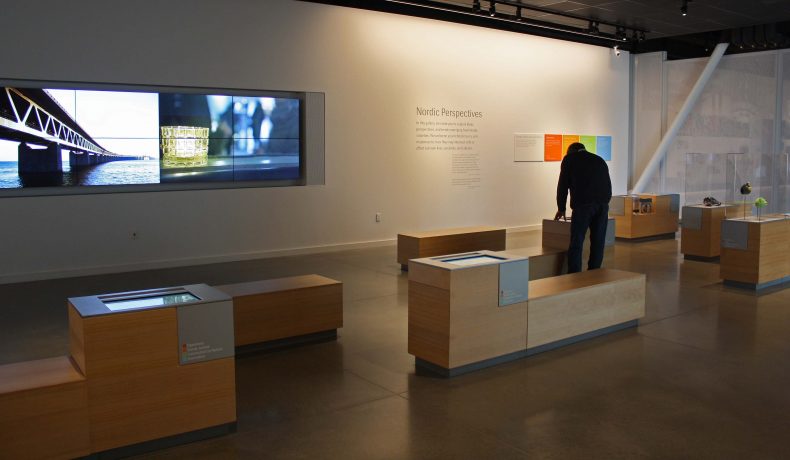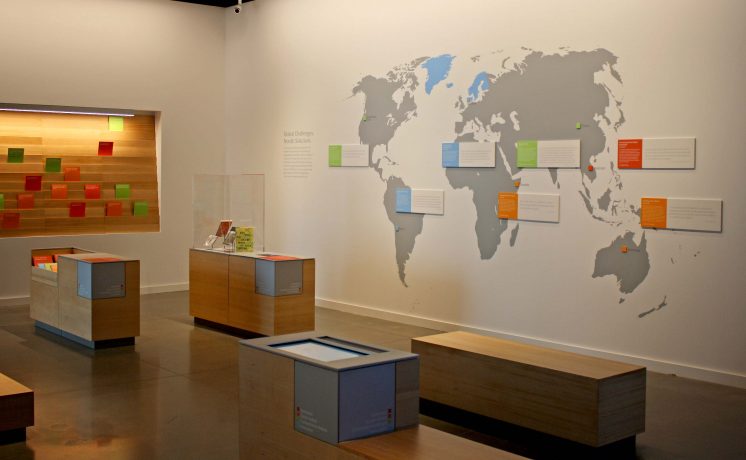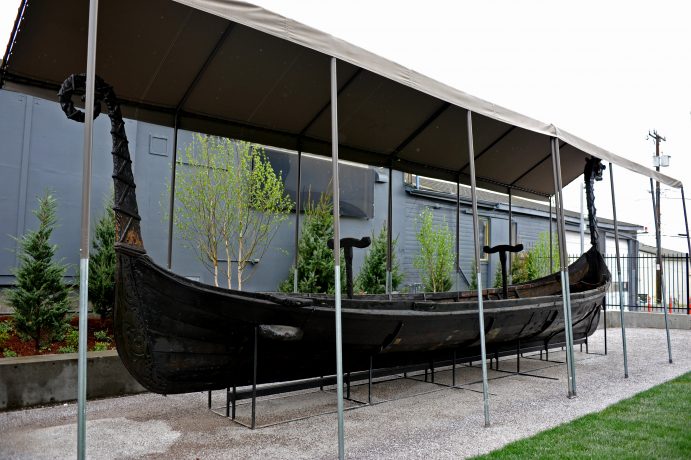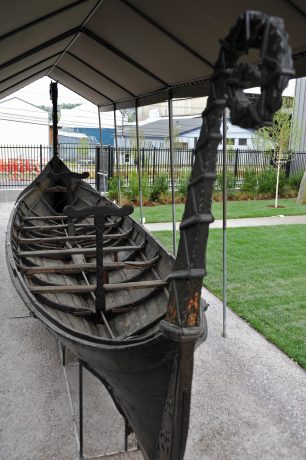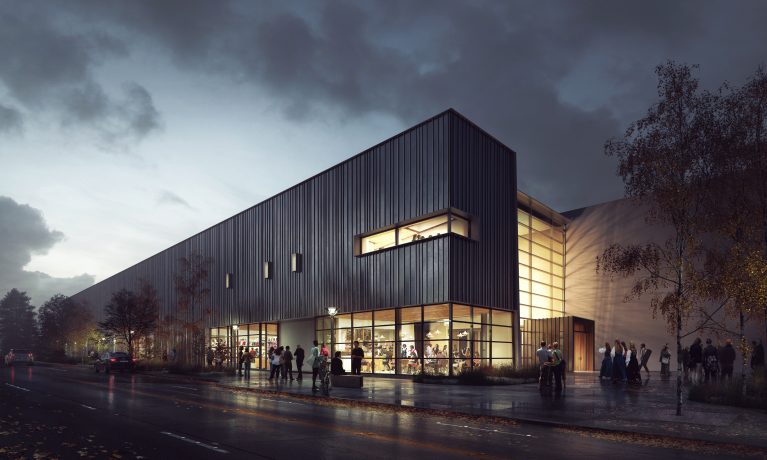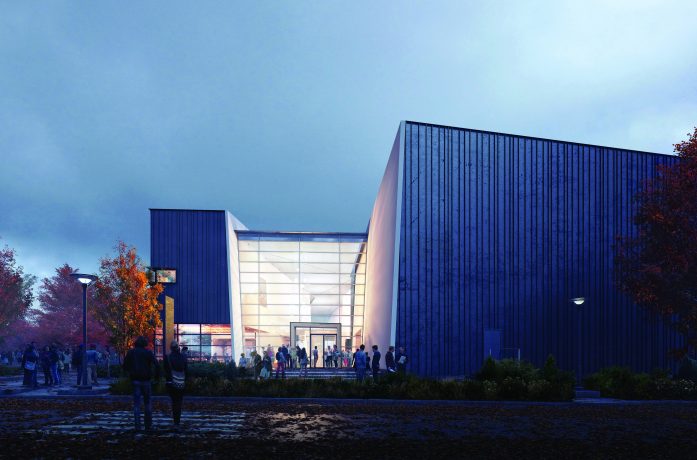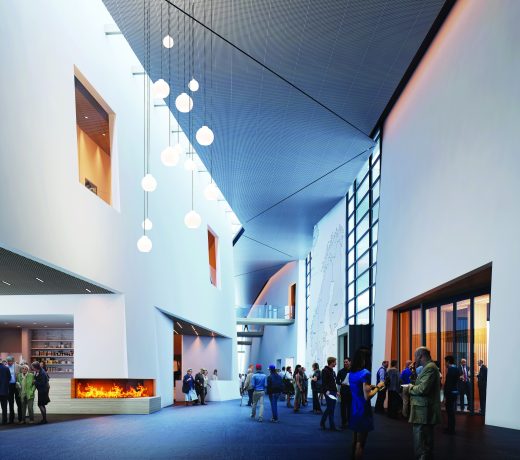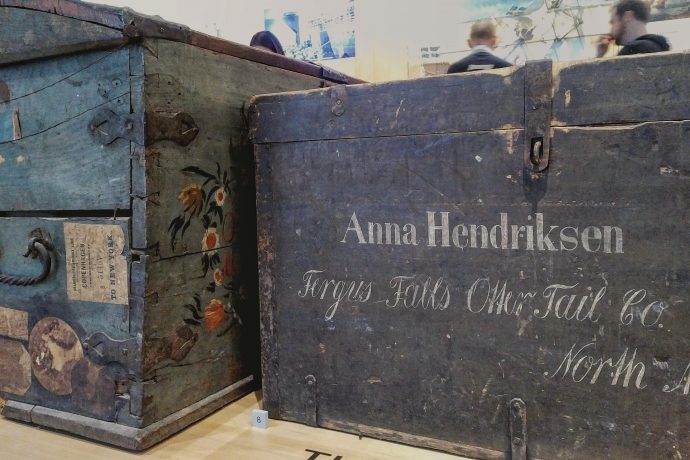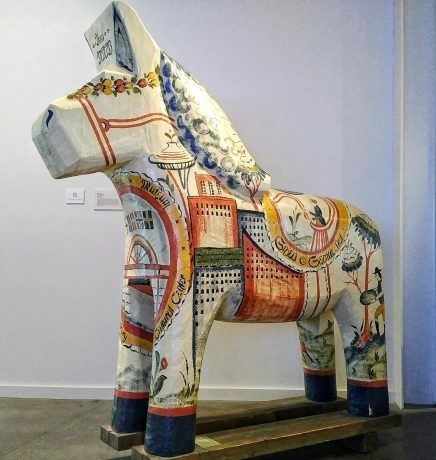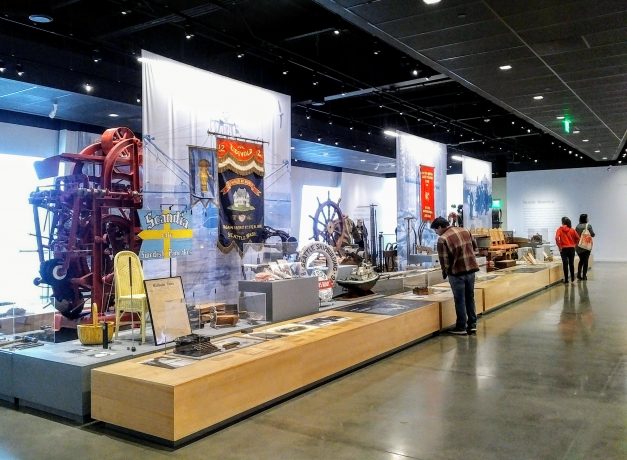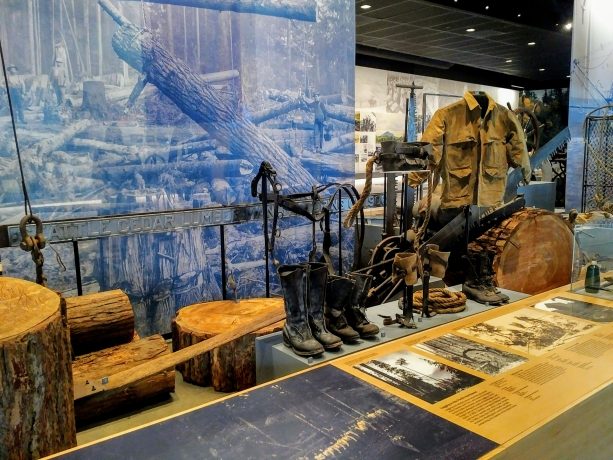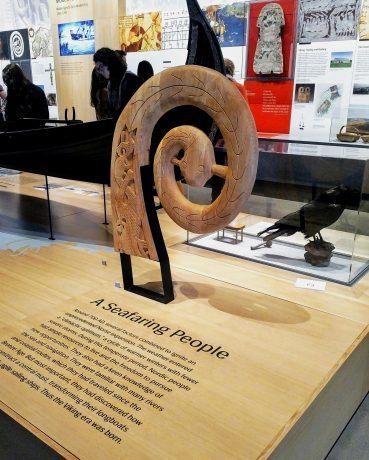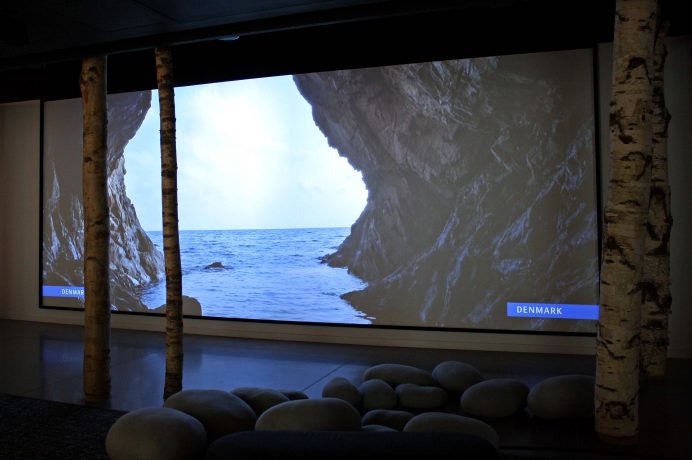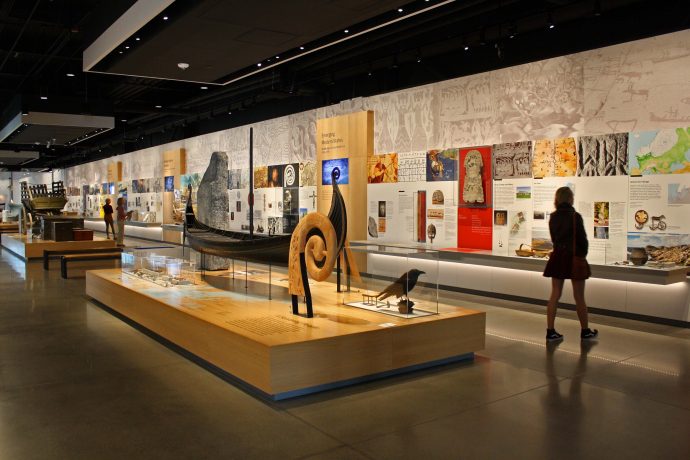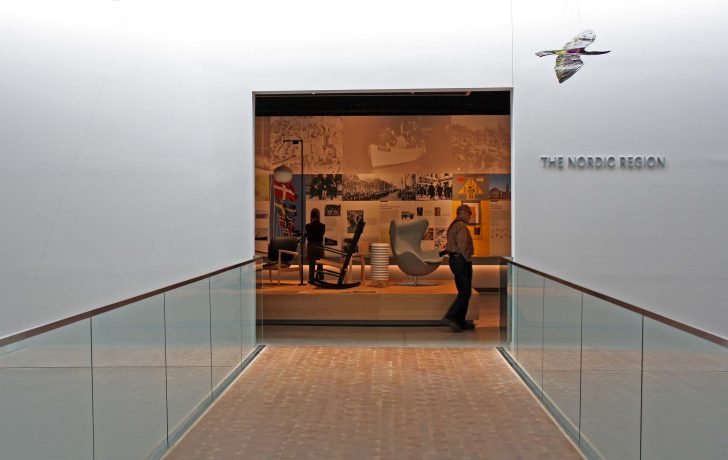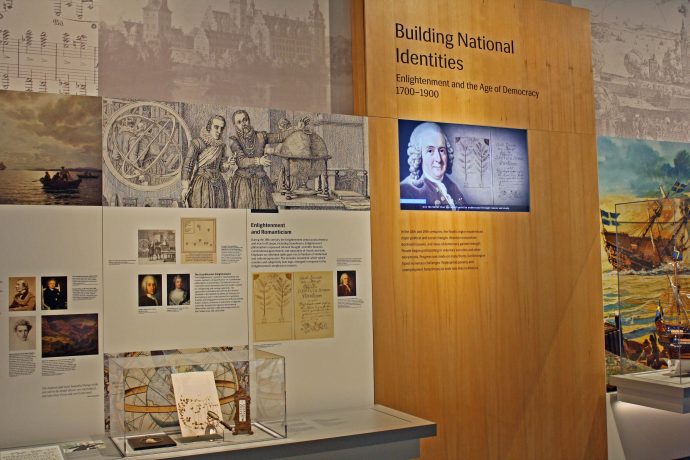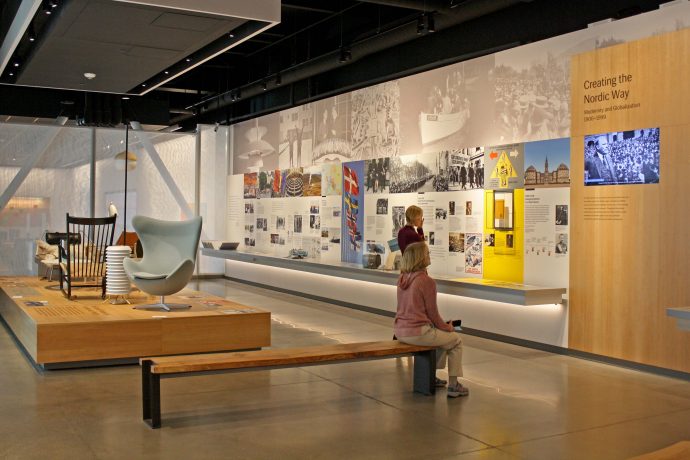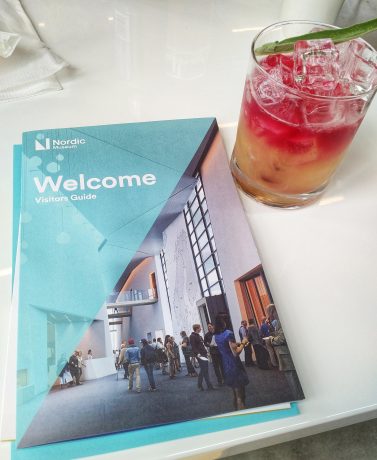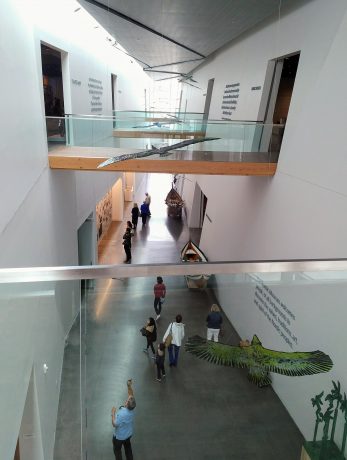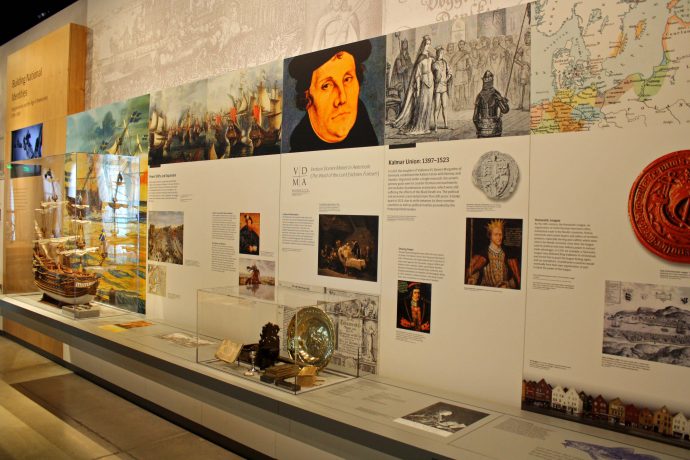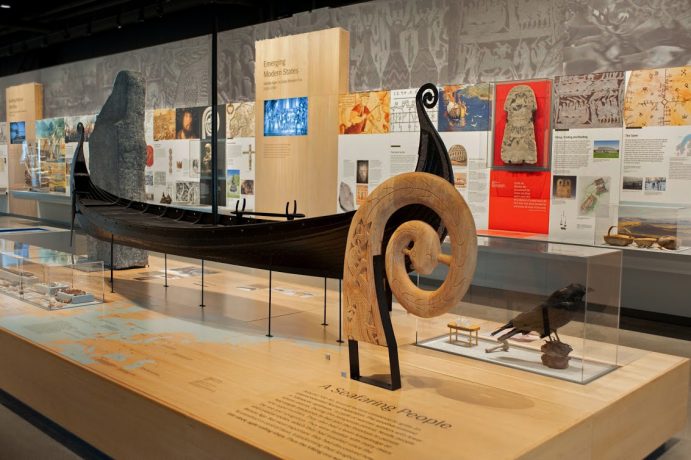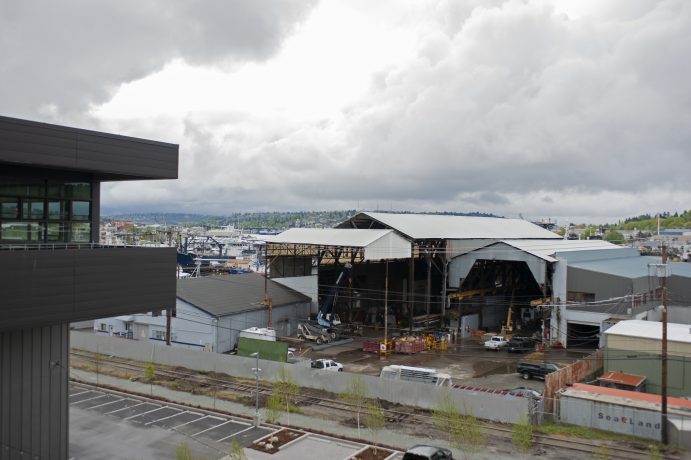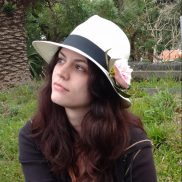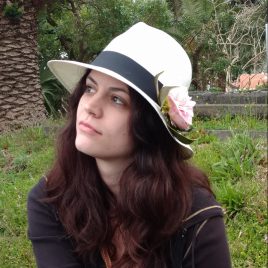Dramatic scenes of vast landscapes speckled with ice, greenery, and flowing water dance across the sprawling screen that sets the stage in the new Nordic Museum's “Sense of Place” gallery. The dimly lit room also includes replica trees and rock-shaped floor cushions, which are surprisingly comfortable. The effect? A feeling of being briefly transported. The purpose? To impress upon the visitor the beauty of nature and its significance in Nordic culture.
In 2018, the Nordic Museum opened in Seattle, WA, after years of fundraising and planning resulted in a new 57,000-sq foot museum and cultural center. As a saga of those who immigrated to the United States from Nordic countries, this museum celebrates Nordic spirit.
This space does not fail to impress upon the visitor the heart and soul of Nordic values and how those translate into American culture, especially in the Pacific Northwest.
The stories of those who left to make a new home in America lie at the core of this museum's narrative. Everything is framed around the broad history of the Nordic regions - Denmark, Norway, Iceland, Sweden, Finland, Faroe Islands, Greenland and Åland. The history of a large region and of the people that later settled in the United States seems too complex and daunting to cover in just a few moderately sized galleries. However, the museum does an excellent job of covering a lot of ground in its space without overwhelming the visitor. It takes a very Nordic approach with sleek and clean designs. The very entrance hall is designed to mimic the curves and feelings of a fjord.
Although there are changing exhibition spaces, the majority of the museum is taken up by “Nordic Journeys,” the permanent exhibition that spans five galleries. It starts by offering an introduction to the Nordic regions and Nordic heritage. The first area not only introduces you to the museum, but to the concept of “Nordic-ness” as well. What does it mean to be Nordic? What best represents Nordic culture? A small selection of representative artifacts and videos help the visitor explore the answers.
As you move upstairs, you pass through the aforementioned “Sense of Place” gallery. This is a wonderfully rendered space. The large screen and faux plants and rocks instantly relax the visitor and provoke moments of awe at the vast and beautiful landscapes of this region. This sets the stage for the rest of your Nordic journey.
The permanent exhibition galleries focus on three main themes: Histories of the Nordic Countries, Nordic Immigrants in the United States and Nordic Perspectives.
Histories of the Nordic Countries
The first theme begins with a great primer on prehistory and the Viking Age. The real delight here is all of the Viking-era artifacts – many of which were loaned from other prestigious institutions. According to museum text, “Nordic design has been driven by the idea of inclusiveness and the belief that everyone should have access to affordable, practical, yet beautiful objects, homes and urban spaces”. This is highlighted in the sections on Nordic décor.
Nordic Immigrants in the United States
Warmer winters and improved maritime technology may have fueled the explorations of the Viking Age, but other less favorable circumstances led to large emigration from the Nordic regions centuries later. According to the Nordic Museum, between 1840 and 1914, over 50 million Europeans left their home countries – with nearly 35 million arriving in the United States. The reasons for leaving include political instability, war, poverty and even the enticement of the United States Homestead Act of 1862. The soul of the museum’s narrative can really be found in the incredible stories of those who emigrated from Nordic countries. Rows of artifacts run down the center of the gallery – peppered with videos and wall quotes. A simple bicycle takes on a whole new meaning when it is positioned next to a story by a Finnish immigrant who details the chaos in his home country during WWII and how he and his family had to flee contested territory on bicycles. The “Nordic America” gallery focuses on Nordic immigrants in the United States— particularly those that settled in the Pacific Northwest region. Throughout the 19th century, Nordic immigrants worked in the railroad industries, explored new terrains, homesteaded and sought gold in California. The objects on display show a variety of industries and traditions that benefited from these individuals.
Nordic Perspectives
To gain real insight on why the history of the Nordic regions and Nordic immigration remains relevant today, look no further than the “Nordic Perspectives” gallery. The museum categorizes Nordic Perspective into three distinct areas: Openness, Social Justice, Connection to Nature & Innovation. The videos in this gallery show how those themes are reflected in modern Nordic companies and values. Interactive touchscreens allow the visitor to compare their ideals with Nordic values and with other visitors. Quizzes require you to make decisions regarding the environment and social issues. At the end of any of the quizzes offered, you get to see how others voted in comparison. The real objective here is to start a dialogue. The touchscreens plus a wall to write about your own heritage or thoughts on these topics create a safe space to discuss many prevalent issues. Too often, museums share a perspective or impart knowledge without creating a space for visitors to truly reflect on these, form their own opinions and create a constructive dialogue. From the dozens of wall cards on display during my visit, I could clearly see that this is something that people truly engaged with. Many were delighted to share their own immigration story; some offered beautiful yet simple solutions to issues regarding their local environment or shared how important innovation is.
New Nordic Restaurant
Finally, the museum’s café, Freya, is not to be missed. I can imagine that this will become a popular dining spot in Seattle’s Ballard neighborhood. The large glass windows surrounding the space offer an open view of the neighborhood. The cuisine is influenced by both New Nordic trends and Pacific Northwest tastes. Offerings include smörgåsbord and Danish dogs that pair well with the array of cocktails featuring aquavit and birch bitters.
